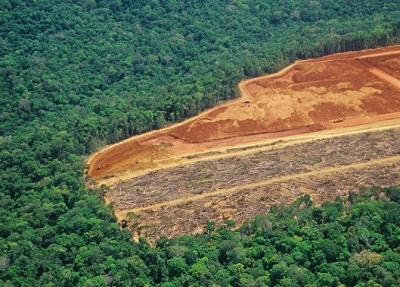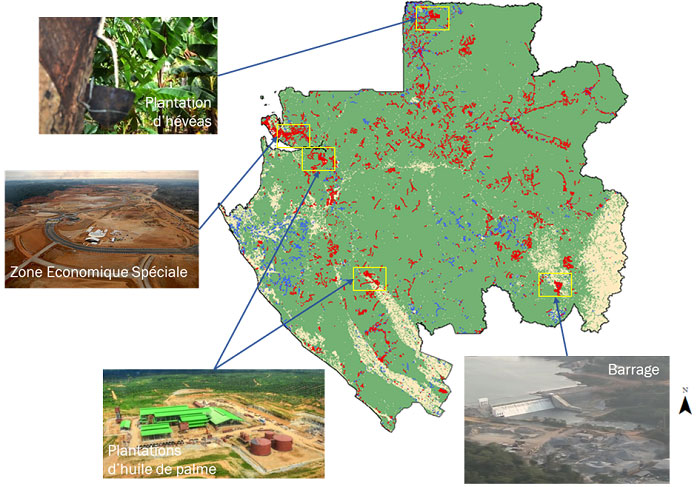Today marks the start of COP27. Held in Sharm El-Sheikh, Egypt, the summit will bring parties together to accelerate action towards the goals of the Paris Agreement and the UN Framework Convention on Climate Change as well as finding ways to adapt such as protect and restore ecosystems, build defenses, establish warning systems and make infrastructure & agriculture more resilient.
Since its creation in 1986, CLS has been developing integrated solutions using innovative space technologies to observe, study, understand and protect our planet, enabling policy makers to begin restoring ecosystems and help adapt to climate change.
Every day, CLS supports NGOs, scientists, governments and civil society in measuring the impacts of global warming, as well as in the resilience and adaptation required to deal with these upheavals. Here is a look back at the space projects developed for a sustainable planet.
Forest management: the advantages of Space
The UN’s FAO notes that over 4.7 million hectares of forests are lost every year with devastating impacts: decline in biodiversity, global warming, soil erosion, desertification, flooding and increase in zoonotic diseases.
As a result of 30 years of close collaboration with forest managers, CLS experts locate, monitor and assess the evolution of forest cover at local, national and global scales in the context of national and international policies.
Specifically, CLS:
- Provides support for forest inventories.
- Maps tropical forest cover.
- Performs change detection.
- Produces statistical indicators of forest cover change.
- Maps of activity data (IPCC nomenclature).
- Transfers its skills to local actors.
- Contributes to international initiatives in terms of coordination on forest monitoring systems.
 As part of the REDDAF project, CLS monitored 8 African countries using satellite images. Our teams were able to identify deforested areas as well as zones that were reforested and stabilized enabling national forest ministries to sustainably manage forests, something that can be applied to other countries.
As part of the REDDAF project, CLS monitored 8 African countries using satellite images. Our teams were able to identify deforested areas as well as zones that were reforested and stabilized enabling national forest ministries to sustainably manage forests, something that can be applied to other countries.
Read more about the REDDAF Project
 Space technology in the fight against pollution
Space technology in the fight against pollution
One of the biggest threats facing our oceans and seas today is plastic and Indonesia is the world’s second largest polluter. Aware of the urgency, Indonesian authorities published a national plan to combat marine pollution aiming to reduce plastic waste by 75% by 2025.
CLS were called upon by local stakeholders to understand how waste moves throughout Indonesia’s waterways. To optimize waste collection, it is important to understand the impact of currents and wind on the surface of the water, because they carry the plastic from the rivers to the sea or to the coasts. Understanding these processes is essential for organizing waste collection teams and methods.
To discover or confirm these locations, and study the currents, satellite transmitters were placed at the mouths of the rivers that carry the most plastic waste during heavy rains.
 With these transmitters using the Argos satellite system and positions transmitted every hour, CLS teams reconstructed the transmitter’s trajectory, and so the pollution, for Indonesian scientists.
With these transmitters using the Argos satellite system and positions transmitted every hour, CLS teams reconstructed the transmitter’s trajectory, and so the pollution, for Indonesian scientists.
Nearly 70 transmitters were deployed to help in the fight against this massive pollution providing surprising result. Each river generated different accumulation zones and 90% of the beacons and plastic washed ashore. Good news in terms of collection as collecting on land is easier, cheaper and less dangerous.

Control urban expansion and limit its impact on biodiversity
The summer of 2019 was one of the three hottest summers on record in France since 1900. French cities, which lack green space and vegetation, are warmer than the surrounding countryside.
The Grand Lyon, an administrative district made up of 59 townships, looking to improve the well-being of its 1.5 million inhabitants and manage growth chose CLS Group, experts in geographical data for 30 years, to map and characterize its urban vegetation, as part of a sustainable management plan.
Our team of experts developed an automatic processing system to combine aerial infrared images (making it possible to “see” vegetation”) with LIDAR data (making it possible to estimate the height of vegetation).
This decision-making tool can generate useful, 3D map products to simulate urban heat islands, pollution dispersal, etc…

CLS Group provides:
- Large-scale vegetation maps.
- Database for operational applications.
- Identification of ecological corridors as well as green corridors.
- Tracking the use of space.
- Improving environmental knowledge for compensatory measures.
- Integrating vegetation data into climate resiliency plans.
 Coastal resilience: Space as an ally for territories
Coastal resilience: Space as an ally for territories
In the face of rising sea levels due to climate change, the occurrence of extreme events such as storms is likely to generate marine submersion phenomena that will have an increasing impact on coastal areas.
In this context, CLS and its partners led an ambitious project: the LittosSCOpe project. By using satellites to identify impacted areas and assess the risk of marine submersion, the LittoSCOpe project developed a tool dedicated to coastal areas to help adapt to the effects of climate change.
 The tool in question is a platform defining permanent or temporary marine submersion zones. It provides data on land elevation and sea level and integrates socio-economic data and land use. Intended to be an easy-to-use decision support tool, the platform provides dynamic risk indicators as well as an estimate of the costs and damages caused by the submersion.
The tool in question is a platform defining permanent or temporary marine submersion zones. It provides data on land elevation and sea level and integrates socio-economic data and land use. Intended to be an easy-to-use decision support tool, the platform provides dynamic risk indicators as well as an estimate of the costs and damages caused by the submersion.



